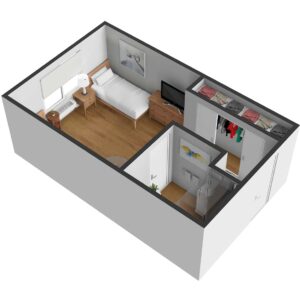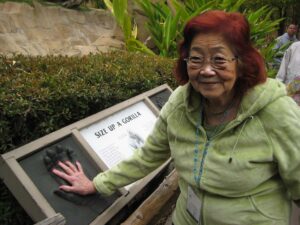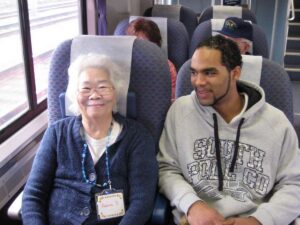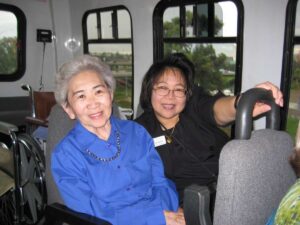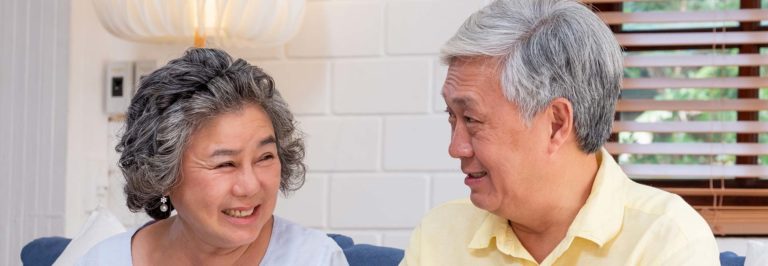Hospice Care Vallejo, California
Hospice Care Community in Vallejo, CA




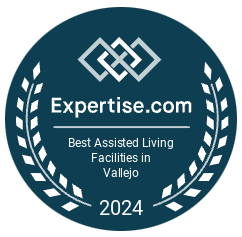

Hospice Care Services
in Vallejo, California
Hospice Care is a supportive service that gives families a much-needed break from the responsibilities of caregiving. We offer a safe, stimulating, homelike environment for your loved one. Fully furnished accommodations in Vallejo and a full complement of care are provided on a short-term basis up to thirty days.
Planning For Hospice Care Near Me in Vallejo
Hospice Care in Vallejo at Vista Prado offers you convenient options during recuperations, family member vacations, caregiver breaks, or simply to try our accommodations.
Something to note: the same documentation and assessment process must take place even for temporary stays with us. Allow us to help you plan for hospice care.

Our Services
Luxury Amenities
With amenities such as aromatherapy, full-service beautician and manicurist, shower spa, central bistro, and show stage, Vista Prado is set apart from other typical senior housing communities.
Indulgent Cuisine
Intimate Setting
Our building is designed on a smaller scale to be easy to navigate and promote socializing between residents.
Exceptional Memory Care
Hospice Care FAQ
What is hospice care?
Hospice care provides terminally ill patients and their loved ones with end-of-life care. The multidisciplinary group of medical experts work to alleviate pain and meet the emotional, social, and spiritual needs of terminally ill patients. Services, including counseling, temporary caregiving, and other forms of practical assistance, are all part of hospice care’s arsenal for assisting families.
In contrast to conventional medical treatment, hospice care is not intended to reverse the underlying illness. Instead, it is intended that whatever time is left be spent in the best quality possible. Hospice care aims to improve the quality of life for terminally ill patients and their families while acknowledging death as a natural part of the process. When a patient receives hospice care, the focus is on the patient and alleviating their symptoms rather than curing the underlying illness.
What is hospice care at home?
Often, terminally ill individuals prefer to spend their time at home instead of in a hospital or other clinical setting. For this reason, patients can receive hospice care at their residences. In addition, hospice care at home allows for readily available around the clock, every day of the week. Although nurses, doctors, and other professionals are present during home hospice care, the primary caregiver is typically a friend or family member.
A hospice staff member visits a patient at home after admission to learn about their needs. You may visit if your loved one has chosen hospice but is still in the hospital. Your primary caregiver will either offer direct physical care or manage the arrival of other carers. Hospice personnel may be able to recruit volunteers to give 24-hour care. In addition, a hospice nurse will regularly examine your condition.
What are the levels of care in hospice in Vallejo?
Routine Care
Hospice offers routine home care in private dwellings, assisted living centers, and nursing homes. The hospice staff and your doctor work together to make your final days as comfortable as possible. All drugs, equipment, and supplies needed to care for a hospice patient are supplied, along with medical social assistance, spiritual support, volunteer visits, and more.
Continuing Care
If your loved one is in the middle of a medical crisis and has severe symptoms, they may need continuous home care. This type of hospice care allows a nurse to stay in your home long-term. However, during a medical emergency, a hospice doctor or nurse may suggest that the patient stay in the hospital for general care.
If a patient’s symptoms can no longer be treated at home, they may need to stay in the hospital. The goal here is to control the patient’s severe pain and stabilize their symptoms so that, if possible, they can go home. Some people may choose to spend their last days in an inpatient center because it is a neutral, safe place where they can be with family and friends.
What's not included in hospice care?
Hospice does not cover assisted living, room and board, or other costs, nor does it offer a cure. Instead, Hospice care focuses on relieving the patient’s suffering, not curing them. For example, a cancer patient may receive painkillers but no radiation or chemotherapy.
When should hospice care start?
Start looking into hospice care when you find out your loved one has a terminal illness or disease. From there, you can start once all treatment options have been exhausted and the person does not have long to live. It is a good idea to talk to your doctor about all care options, including hospice.
When is it time for hospice?
Hospice care is often given for diseases like Alzheimer’s and other dementias in their later stages, cancer, heart disease, lung disease, AIDS, and ALS, among others. Doctors recommend hospice care when a patient has less than six months to live. At that point, comfort care and managing symptoms become the main focus, and the patient no longer needs or wants to keep getting treatment. Hospice care is the only kind of care that gives a higher level of support needed for the terminally ill.
Doctors will determine the right time based on the frequency of hospitalization, infections, appetite, rapid decrease in health, frequency of symptoms, a deteriorating mind, and an inability of the patient to care for themselves.
Who can receive hospice care in Vallejo?
The terminally ill in Vallejo can formally start hospice care when they are diagnosed with six-month or less to live. Patients on Medicare may require more documentation, specifically from a doctor confirming they qualify. Hospice programs must adhere to federal regulations as well as state licensing requirements before they may provide care. Today, more and more hospice organizations operate their own hospices or have partnerships with other hospices. Because of the increased care requirements, some patients may need to relocate. However, Medicare and Medicaid’s Hospice Benefit does not pay for treatment provided in these locations.
What exactly does hospice do?
A hospice team will make a plan of care for your loved one that can include any or all of the following services based on your terminal illness and any other health problems you have:
- Doctor and nurse care
- Necessary medical equipment and supplies
- Medications
- Help with housework and errands
- Therapies
- Social services
- Advice on dietary needs
- Spiritual care
- Respite care
All care services must be given in a Medicare-approved facility, like a hospice facility, hospital, or skilled nursing facility with a contract with the hospice.
A hospice team will tell you what other services Medicare will cover to help deal with pain and other symptoms related to your terminal illness and related conditions.
What happens when a person goes on hospice care in Vallejo?
When a physician refers a patient to hospice, the treatment immediately begins. After admission, a hospice care team will work with the patient and their loved ones to create a care plan tailored to the individual’s preferences and wants. Next, the patient will be assigned a team of physicians, nurses, spiritual care practitioners, home health aides, social workers, pharmacists, therapists, and others. Finally, the team will have a schedule of care they will maintain, including regular visits.
What are the benefits of hospice care?
Hospice care is holistic. It is a treatment that takes into account the patient’s clinical, emotional, and spiritual requirements, as well as their hopes and aspirations for the end of life. As a result, hospice care allows terminally ill patients to spend their final days, weeks, or months with their loved ones in more comfort and, in many circumstances, for longer lengths of time than they would have had they pursued potentially curative therapy right up until the moment of death.
Hospice care gives patients comfort and a sense of peace. Additionally, the patient’s pain and other symptoms are managed by the hospice nurse and assistant regularly, reducing the need for unexpected hospitalizations. Terminally ill patients usually do better in the company of loved ones for a fuller end of life, along with a chaplain for emotional distress. Patients benefit as they have more say over their care and life, providing meaningful care and time with loved ones with all their cares provided.
Where is hospice care provided in Vallejo?
Find caring hospice care at Vista Prado, we can help when the primary caregivers need to take a vacation from their responsibilities. We provide a comfortable, stimulating, and homelike environment for your loved one. Vallejo offers all-inclusive, fully furnished short-term stays of up to 30 days. Remember that the same examination and documentation process applies even for brief stays. Plan your end-of-life care with our assistance.
How long does a person live when in hospice?
On average, a person has around six months left to live once they start hospice care. However, a patient’s hospice care may be extended for an additional six months if their doctor feels they have less than a 60 percent chance of survival.
Is hospice care the same as palliative care?
Hospice care focuses on easing symptoms rather than curing the underlying medical problem and is given when a patient either has exhausted all possible curative alternatives or has decided against pursuing therapy due to unacceptable risks. Palliative care aims at relieving symptoms rather than curing the underlying cause of the pain.
Furthermore, although hospice care and palliative care are similar, but there are some important differences between the two. Since more than 90% of hospice care is paid for by the Medicare hospice benefit, hospice patients must meet Medicare’s eligibility requirements. Palliative care patients do not have to meet the same requirements.
Who pays for hospice care?
The government health insurance program pays for hospice care through the Medicare Hospice Benefit. Depending on your plan, hospice treatment may or may not be covered by Medicaid. Additionally, partial or full coverage may come from private or employer-based insurance policies. You should inquire with your insurance provider since there are many policies that may or may not pay for hospice care.
Some hospices provide treatment at free cost or at a reduced fee based on your capacity to pay for those who do not have insurance or whose insurance does not cover hospice services in full. Donations, grants, and other funding opportunities are common reasons they are able to provide this service. Most hospices offer financial aid specialists available to assist you, answer your concerns, and ensure you receive the necessary treatment.
Assisted Living
Vista Prado in Vallejo, California, provides Assisted Living services with a strong focus on Memory Care. Residents can participate in a wide range of activities designed to enhance their well-being.
Memory Care
Our Memory Care Facility in Vallejo, CA provides a secure and structured environment where residents can thrive with set routines.
Respite Care
Hospice Care
Our staff provides hospice care at our Vallejo, CA facility, ensuring a comfortable and peaceful environment for all patients.
Transitional Living
Vista Prado in Vallejo, California, offers Transitional Living services, providing temporary support for individuals as they adjust to new living situations or recover from medical events.
Diabetes Care
Vista Prado in Vallejo, California, provides specialized Diabetes Care, offering comprehensive support and management for residents with diabetes.
Wellness Program
Memory Care Amenities


